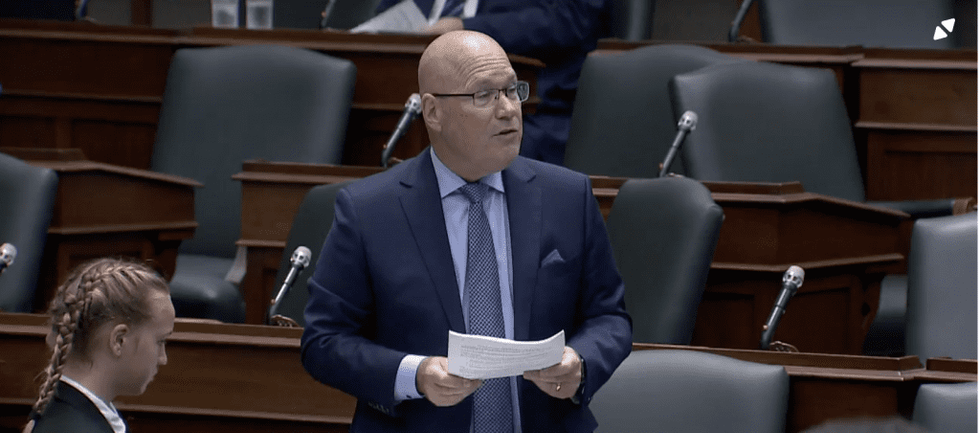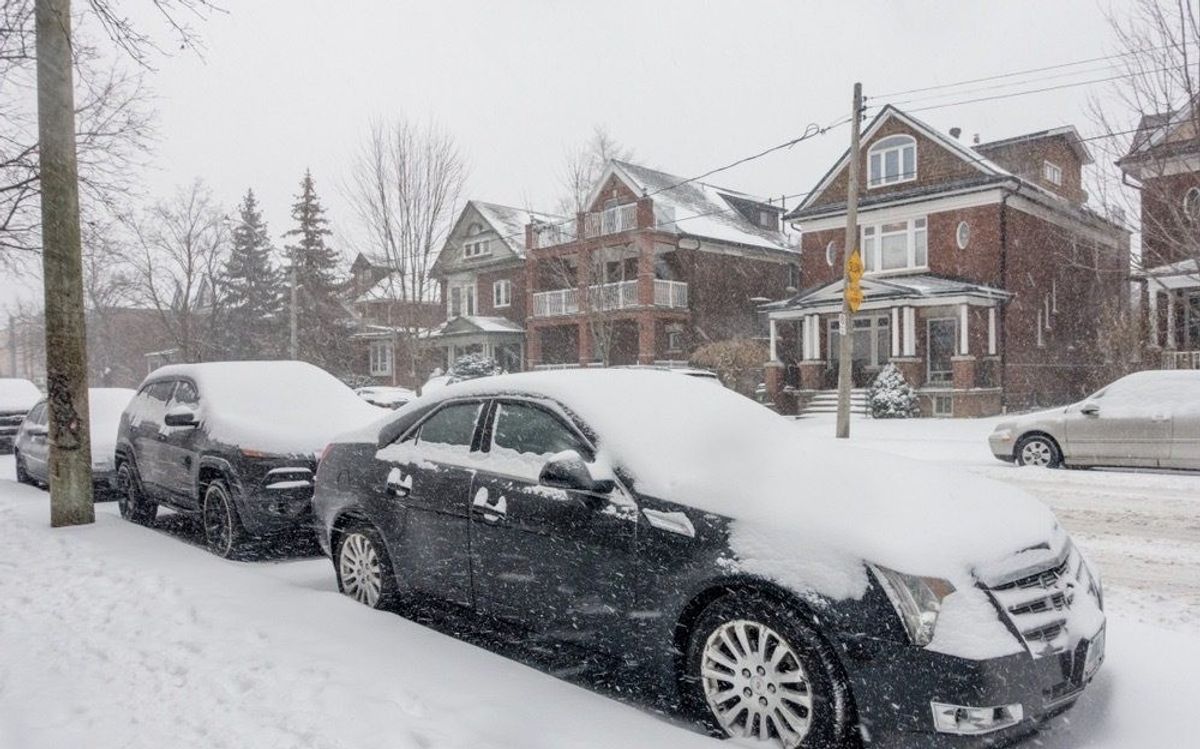The province is officially proposing a strong mayor system in Toronto and Ottawa, which would grant sitting mayors bold veto powers in efforts to boost new housing creation processes.
The legislation was tabled by Steve Clark, Ontario Minister of Municipal Affairs and Housing, today at Queens Park. Titled the Strong Mayors, Building Homes Act, it intends to “provide municipalities with additional tools to build more homes faster."

If passed, the legislation, which would amend the Municipal Act and City of Toronto Act, will take effect on November 15, 2022, the start of the new municipal council term.
“The reality is over one third of Ontario’s growth over the next decade is expected to happen in Toronto and Ottawa, and too many families are already struggling with housing and the rising cost of living. We need to support efficient local decision-making to help cut through red tape and speed up development timelines,” said Clark in a statement. “While there is no silver bullet to addressing the housing crisis, the Strong Mayors, Building Homes Act is another step in the right direction to provide more tools to municipal leaders to deliver on their platform commitments to constituents. The province is actively deepening our cooperation on all fronts across all municipalities to get 1.5 million homes built over the next 10 years.”
The new governance model would implement a number of changes:
- It will allow mayors to appoint a chief administrative officer (CAO) and municipal department heads, as well as create and re-organize departments. This would include the power to hire and fire city department heads, but not extend to chief municipal officers such as the auditor general, chief of police and fire department, and the medical officer of health.
- Will allow the mayor to appoint chairs / vice chairs of committees and local boards and establish new committees.
- Allow the mayor to veto bylaws approved by council if they could interfere with a provincial priority (such as the creation of the provincial mandate to create 1.5M homes over the next decade). No such powers currently exist in the municipal governance framework; in order to veto a bylaw, the mayor will need to give notice of their intent to veto within two days of council’s introduction, and must move forward with the veto action within 14 days. They must provide written reasons for using such veto powers, which are then subject to be overridden by a two-third’s council majority vote. Under the current system, Ontario mayors have one council vote.
- Allow the mayor to propose the municipal budget annually, for council consideration. Council would then have a prescribed period to review and make amendments, which are also subject to the mayoral veto process.
- Require that if a mayor’s seat becomes vacant, in municipalities impacted by this proposal, the vacancy could be filled by a by-election.
In a housing policy context, these new powers would allow mayors to put new development measures in place while bypassing much of the debate and input states at the community and council levels.
The province is also launching a Housing Supply Action Plan Implementation Team (HSAPIT), to provide communities with advice on market housing initiatives, including the recommendations raised in the Housing Affordability Task Force (HATF) and the More Homes for Everyone Act. Drew Dilkens, Mayor of the City of Windsor, is to be appointed as Chair, along with Cheryl Fort, Mayor of the Township of Hornepayne, as the Vice Chair. Additional team members will be selected in the coming weeks, with the first meeting scheduled for early fall.
Premier Doug Ford first indicated the province was considering the new governance model for Toronto and Ottawa in late July, with additional municipalities to potentially follow. If and when the government decides to expand the governance model, no new legislation would need to be passed.
In her delivery of the province’s throne speech, Lieutenant Governor Elizabeth Dowdeswell read that a strong mayor system would be instrumental in “breaking through the logjams” that currently hold up housing creation in the province’s largest urban centres.
“Strong mayor systems will help municipal leaders work more effectively with the province, with shorter timelines for development, standardized processes, and address local barriers to increasing the supply of housing,” she said.
“For urban populations, these new powers will be especially relevant as the province works with its municipal partners to expand the footprint of transit-oriented communities, so more people can live, work and play near the convenience of public transit.”
Toronto Mayor John Tory has expressed support for the new model, telling the Globe and Mail, “I’ve said that I was favourably disposed,” in regards to the discussion, which has been mused upon for years.
Ottawa Mayor Jim Watson, however, is less enthused. In a statement made following the Throne Speech and reported by the Ottawa Citizen, he urged the province to reconsider implementing the new model.
“I don’t see a need to give certain mayors more powers and veto power over duly elected councillors,” Watson stated. “What we have in place now, while imperfect, does create a system of checks and balances between the mayor and council… I have never asked for more powers and I would urge the government to not proceed with this aspect of the throne speech.”
However, these most recent provincial measures are being lauded by the construction industry, which has been calling for systemic change in order to boost supply. In a statement responding to the measures outlined in the throne speech, including the commitment to a strong mayor model, RESCON President Richard Lyall said, “these are very crucial and important first steps towards tackling the housing supply shortage.
“We must reform our development approvals system and tear down the entrenched barriers to building so that we can continue to boost the supply of housing. We must tackle inefficiencies in the system and pull out all the stops to build more housing because the population is growing, and demand is not going away.”
More to come...





















